In today's era of rapid technological advancement, the use of lasers has significantly expanded across various fields such as cutting, welding, marking, and additive manufacturing, revolutionizing many industries. However, this expansion has also highlighted a significant issue: a lack of awareness and training regarding laser safety among engineers and technical workers. Many frontline personnel are exposed to laser radiation without a proper understanding of its potential hazards. This text aims to underline the importance of laser safety training, the biological effects of laser exposure, and comprehensive protective measures for those working with laser technology.
Laser safety training is crucial for the safe and efficient operation of laser welding and similar applications. The high-intensity light, heat, and potential harmful gases produced during laser operations pose health risks to operators. Safety training teaches engineers and workers how to correctly use personal protective equipment (PPE), such as protective glasses and masks, and to adopt strategies to avoid direct or indirect laser exposure, ensuring effective protection for their eyes and skin.
Lasers can cause severe skin damage, necessitating skin protection. However, the primary concern is eye damage. Laser exposure can lead to thermal effects, acoustic effects, and photochemical effects:
Thermal Effects: Heat absorption can cause burns to the skin and eyes.
Acoustic Effects: Mechanical shock waves can cause localized vaporization and tissue damage.
Photochemical Effects: Certain wavelengths can trigger chemical reactions, potentially leading to cataracts, corneal or retinal burns, and an increased risk of skin cancer.
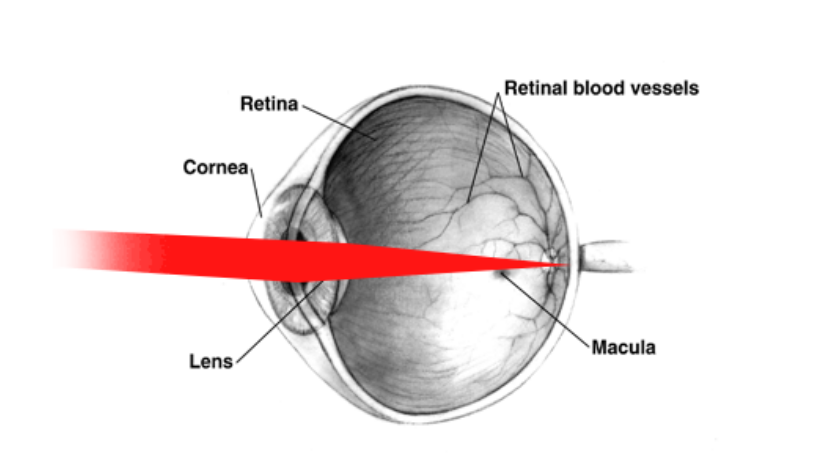
The biological effects of laser radiation on the human eye span a wide range of wavelengths, from ultraviolet to far-infrared, with varying damage effects based on the laser's wavelength. Below is a summary of eye pathology effects categorized by laser wavelength range:
180-315 nm (UV-B, UV-C): Photokeratitis, similar to sunburn but occurring on the cornea of the eye.
315-400 nm (UV-A): Photochemical cataracts (clouding of the eye's lens).
400-780 nm (Visible Light): Photothermal damage causing retinal burns, occurring when the retina is damaged by exposure to light.
780-1400 nm (Near-Infrared): Cataracts and retinal burns.
1.4-3.0 µm (Infrared): Protein clouding in the aqueous humor (the fluid in the front part of the eye), cataracts, and corneal burns.
3.0 µm-1 mm: Corneal burns.
Laser safety standards are comprehensive guidelines designed to minimize the risks of laser exposure. These standards are developed and updated by international and national regulatory bodies, including the International Electrotechnical Commission (IEC) and the American National Standards Institute (ANSI). Key standards in laser safety include:
IEC 60825-1: An internationally recognized safety standard for laser products, providing classification, requirements, and user guidelines.
ANSI Z136.1: A crucial standard in the US outlining all aspects of laser safety management for employers, laser operators, and safety officers.
Additionally, China has established its own laser safety standards to ensure the safe use and management of laser products, including:
GB7247.1-2001: Specifies safety classification, requirements, and user guidelines for laser products across various fields. This standard was later replaced by GB 7247.1-2012.
GB18151-2000: Focuses on the specifications and requirements for laser protection screens in laser processing areas. These protective measures include long-term and temporary solutions, such as laser curtains and walls, to ensure safety during operation. This standard has been replaced by GB/T 18151-2008.
GB18217-2000: Establishes guidelines for laser safety signs designed to protect individuals from laser radiation. This standard has been superseded by GB 2894-2008 "Safety Signs and Guidelines for the Use."
These national standards, along with international standards, provide a comprehensive framework for the safe use of laser technology. By adhering to these standards, the potential risks associated with laser equipment can be effectively managed, ensuring the safety of operators and those around them.
Lasers are categorized into several classes based on their power output and potential danger to human eyes and skin. This classification system helps users understand the level of risk and necessary safety precautions. The main categories include:

Class 1 lasers are universally considered safe under typical conditions of use, meaning direct exposure to these lasers, even with common magnifying devices like telescopes or microscopes, does not pose a risk. However, using very powerful magnifying tools could potentially concentrate the laser's light beyond safe levels. Devices like CD or DVD players often fall into this category because they incorporate stronger lasers that are securely contained to prevent exposure during standard operation.

These lasers are safe for direct exposure without the need for protective gear under standard use. The safety concern arises when optical devices that can focus the beam, such as microscopes or telescopes, are used. Class 1M lasers emit wide or diffused beams, ensuring that the light remains within safe limits when entering the eye directly. Nonetheless, using magnifying optics with these lasers can elevate the risk to that of higher-class lasers.
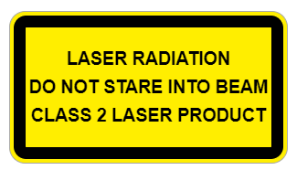
Class 2 lasers are safe because the natural human instinct to blink or avert one's gaze from bright light acts as a protection against accidental exposure, effective for up to 0.25 seconds. These lasers operate in the visible light spectrum (400-700 nanometers) with a power ceiling of 1 milliwatt (mW) for continuous light emission, making them suitable for applications like laser pointers and distance measuring.
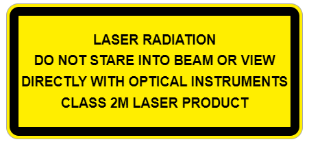
Similarly safe due to the blink reflex, Class 2M lasers produce beams that are either broad or rapidly dispersing, keeping the light entering through the pupil within safe parameters. The critical caveat is the use of optical devices, which can focus and intensify the beam, presenting an increased risk to eye safety.
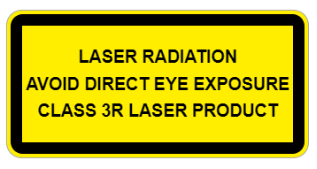
While considered relatively safe, Class 3R lasers demand careful handling due to their ability to emit light beyond the safe exposure limit. Visible spectrum lasers in this class are capped at 5 milliwatts (mW). They necessitate adherence to safety guidelines, especially avoiding direct beam exposure.
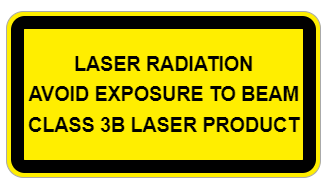
Direct exposure to Class 3B laser beams poses a significant risk, yet indirect light from diffuse reflections (e.g., off paper) is not harmful. The power limit for these lasers varies with the operation mode but generally does not exceed 0.5 watts (W) for continuous beams. Usage often requires protective eyewear, and devices incorporating these lasers must have safety measures like key switches and locks.
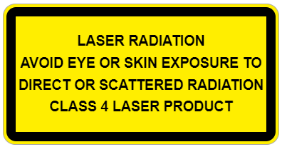
The most potent and hazardous class, Class 4 lasers can cause immediate harm, including skin burns and permanent eye damage from any form of beam exposure. They necessitate comprehensive safety protocols, including the use of key switches and locks, to mitigate the risk of accidental activation. These lasers find application in diverse fields from industrial manufacturing to medical therapies, underscoring the need for rigorous control measures to prevent accidents.
The use of warning and safety signs is a critical component in the safe operation of laser equipment. These signs serve as visual alerts to the potential dangers associated with the use of laser technology.
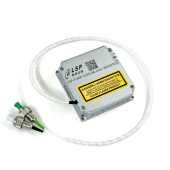
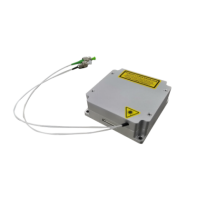
Warning signs should be prominently displayed on the exterior and control panels of laser equipment. These signs are intended to clearly indicate the presence of potential hazards to anyone in the vicinity of the equipment.
It's mandatory for all laser devices to have safety labels that display warnings, the radiation class, and the location of radiation emission. These labels play a vital role in informing users and bystanders about the type of laser and the specific risks associated with its operation.
The labels must be placed in positions where they can be easily seen without the need to come into direct contact with laser radiation. This ensures that individuals can be aware of and understand the potential risks before interacting with or being exposed to the laser device.
By adhering to these guidelines for the placement of warning and safety signs and the use of safety labels, the risk of accidents and injuries can be significantly reduced. These precautions help to ensure that those working with or around laser technology can do so safely, with a clear understanding of how to mitigate potential hazards.
Contact: Lumispot
Phone: +86-15072320922
Tel: +86-510-87381808
Email: sales@lumispot.cn
Add: Bldg 4 No.99 Fu Rong 3rd Road, Wuxi, China